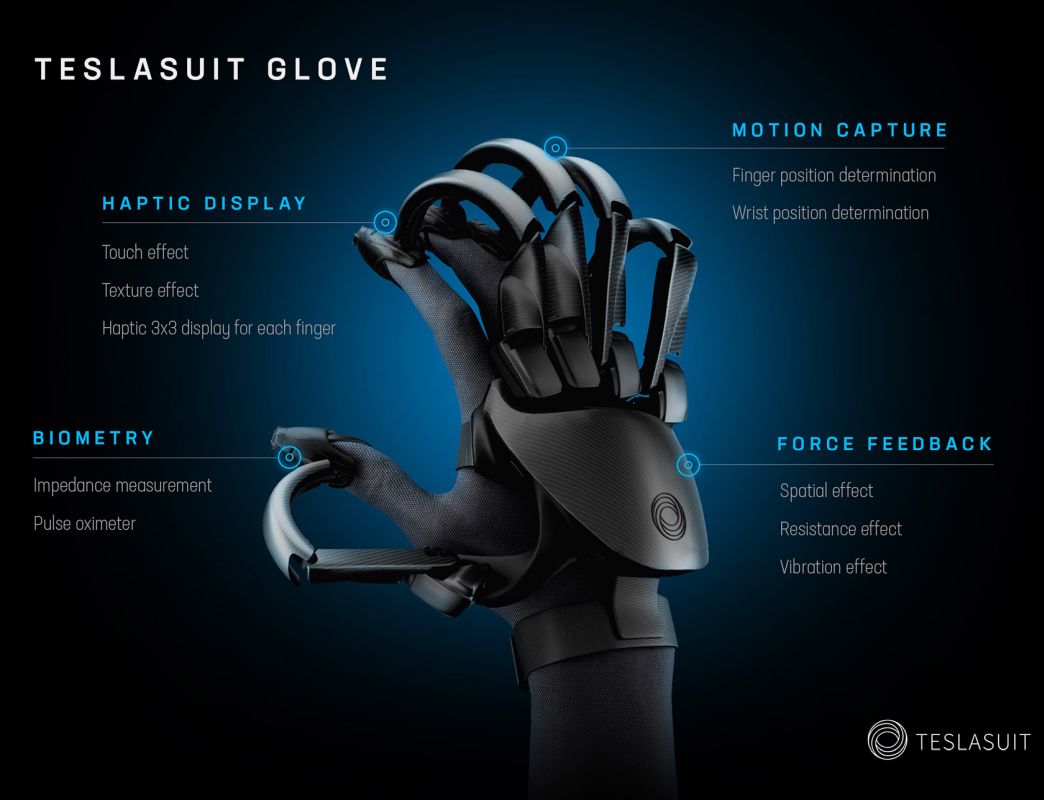Much like the full-body suit, the Teslasuit Glove is designed to be an extension of the suit and is designed for mission critical simulations, such as fire fighting, astronomy training, medical rehabilitation, and components assembly and review. What separates the Teslasuit Glove from other VR accessories is that it features a combination of basic haptic and force feedback. Courtesy of the nine electrodes fitted on each finger. The end result of this fitting enables the Teslasuite Glove to produce the sensation of touch on a non-existent surface. All while the plastic exoskeleton surrounding it creates resistance and vibration, allowing the user to think that they are interacting with a solid object. It doesn’t stop there either. The Teslasuit Glove also includes a pulse oximeter, enabling users keep track of their heart rate and, in the process, indirectly measure stress levels being experienced while interacting with certain scenarios.
At the time of writing, Teslasuit says that it will be showing off the glove at CES 2020, albeit under lock and key; because the glove is still in testing, the company has stated that it won’t allow users to test it out. At current, it plans on making the gloves available to the public sometime during the second half of 2020. On another note, the creators of the Teslasuit and Teslasuit Glove haven’t entirely ruled out marketing their products for gaming and entertainment applications. Although, at a price point of around US$5000 (~RM20653), we doubt it’s going to sell as fast as banana fritters. (Source: The Verge, TechEBlog // Image: TechEBlog)
